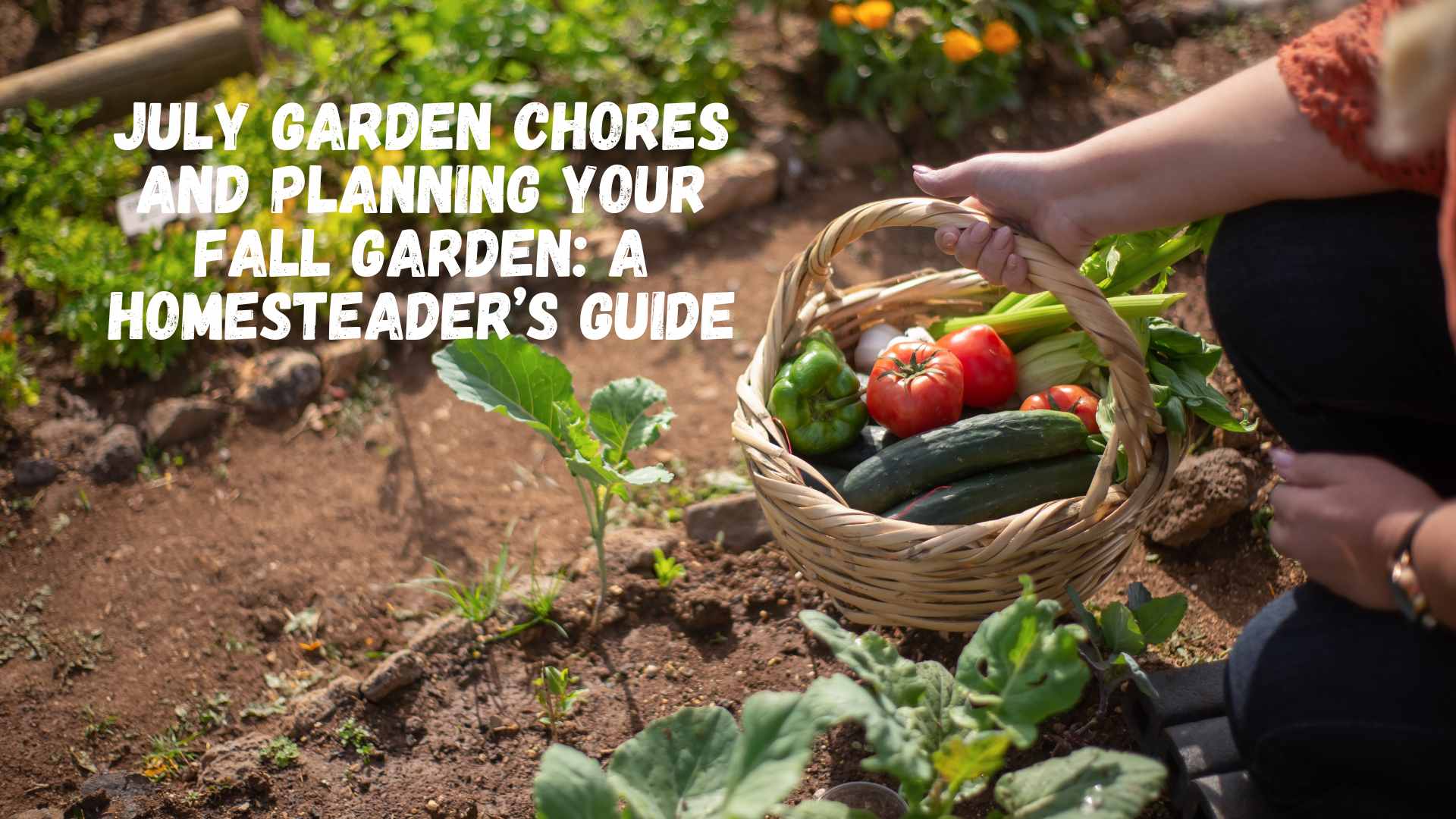Ah, July! The pinnacle of summer with its scorching days and balmy nights. For homesteaders, it’s the month where the garden is in full swing, bursting with life, and it’s also the perfect time to start thinking ahead to your fall garden. Let’s dive into what you need to do in your garden this month and how to set yourself up for a bountiful fall harvest.
July Garden Chores
July is all about maintenance and preparation. Your garden should be thriving by now, and there’s plenty to keep you busy. Here are the key tasks to focus on this month:
- Harvesting: July is prime time for picking summer vegetables like tomatoes, cucumbers, zucchini, and peppers. Regular harvesting encourages more production, so keep those baskets handy! Don’t let fruits and veggies over-ripen on the vine as it can attract pests and decrease future yields.
- Weeding: Weeds can quickly take over if left unchecked. Regular weeding ensures your plants get the nutrients and water they need. Consider using mulch to suppress weed growth and retain soil moisture. Organic options like straw, grass clippings, or wood chips work well.
- Watering: With the intense heat, your garden will need regular watering. Water early in the morning or late in the evening to minimize evaporation. Deep watering encourages strong root systems. Consider installing drip irrigation or soaker hoses to conserve water and provide consistent moisture directly to the roots.
- Feeding: Give your plants a mid-season boost with a balanced organic fertilizer. Compost tea, fish emulsion, or seaweed extract are excellent choices to promote healthy growth and production. Apply according to the package instructions and water well afterward.
- Pest Control: Keep an eye out for pests. Hand-pick beetles, use insecticidal soap for aphids, and employ organic methods to keep the bad bugs at bay. Introducing beneficial insects like ladybugs and lacewings can help control pest populations naturally.
- Pruning: Remove any diseased or damaged leaves and stems to promote healthy growth. For tomato plants, pinch off the suckers (the small shoots that grow between the main stem and branches) to direct more energy to fruit production.
- Support: Ensure that your vining plants, such as tomatoes and cucumbers, have proper support. Staking, trellising, or using cages helps keep the plants off the ground, reducing the risk of disease and making harvesting easier.
- Disease Management: Watch for signs of disease, such as blight on tomatoes or powdery mildew on cucurbits. Remove affected parts immediately and use organic fungicides if necessary. Proper spacing and good air circulation help prevent many diseases.
Planning Your Fall Garden
As you savor the fruits (and veggies) of your summer labor, it’s time to start planning for your fall garden. Here’s a step-by-step guide to get you started.
1. Know Your Planting Zone
Understanding your USDA planting zone is crucial for determining what and when to plant. Here’s a quick overview:
- Zones 3-4: These cooler regions have a shorter growing season, so focus on fast-maturing crops like radishes, spinach, and lettuce.
- Zones 5-6: Moderate zones where you can extend your growing season with the right planning. Think carrots, beets, and kale.
- Zones 7-8: Milder climates that allow for a wide variety of fall crops, including broccoli, Brussels sprouts, and collards.
- Zones 9-10: Warm regions where gardening can continue almost year-round. Consider planting arugula, Swiss chard, and turnips.
2. Choose the Right Crops
Select crops that thrive in cooler temperatures and mature quickly. Here’s a list of ideal fall garden crops by category:
- Leafy Greens: Spinach, kale, Swiss chard, lettuce, arugula, mustard greens.
- Root Vegetables: Carrots, beets, radishes, turnips, parsnips.
- Brassicas: Broccoli, cauliflower, Brussels sprouts, cabbage, kohlrabi.
- Legumes: Peas, fava beans.
- Alliums: Onions, garlic, leeks.
3. Prepare Your Soil
After your summer crops are harvested, amend the soil with compost to replenish nutrients. This creates a fertile bed for your fall plants. Consider adding aged manure or a balanced organic fertilizer to ensure the soil is rich and ready for new plants.
4. Start Seeds Indoors
For a head start, begin seeds indoors in late July or early August. This is especially important for zones with shorter growing seasons. Use seed trays or pots with good drainage, and place them in a sunny spot or under grow lights.
5. Transplant and Direct Sow
By late August to early September, you should be ready to transplant your seedlings and direct sow seeds into your prepared garden beds. Be sure to harden off your seedlings by gradually exposing them to outdoor conditions over a week before planting them out.
6. Extend the Season
Use row covers, cold frames, or greenhouses to protect your fall garden from early frosts and extend your growing season. These tools help trap heat and create a microclimate that can keep your plants thriving longer.
7. Succession Planting
Stagger your plantings by sowing seeds every couple of weeks to ensure a continuous harvest. This method works well with fast-maturing crops like radishes, lettuce, and spinach.
8. Companion Planting
Utilize companion planting to maximize space and improve plant health. For example, plant carrots and onions together to deter pests or grow leafy greens in the shade of taller plants like broccoli.
Conclusion
July is a bustling month for homesteaders, filled with the joys of harvest and the anticipation of future crops. By keeping on top of your garden chores and planning ahead for fall, you can ensure a continuous supply of fresh, homegrown produce. Happy gardening!
Follow us on social media for more homesteading tips and tricks: Facebook, Instagram, Twitter, YouTube, TikTok.






